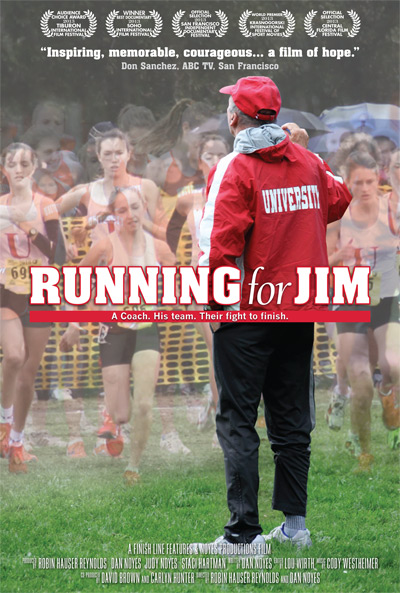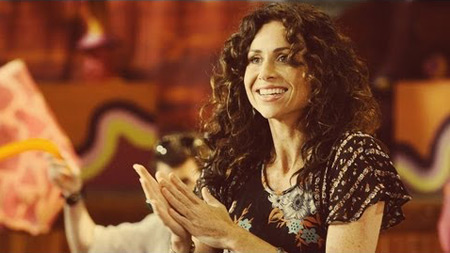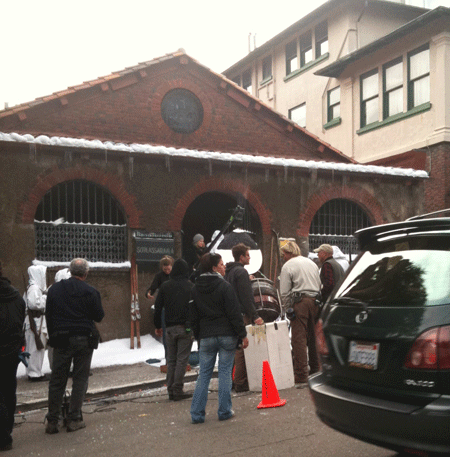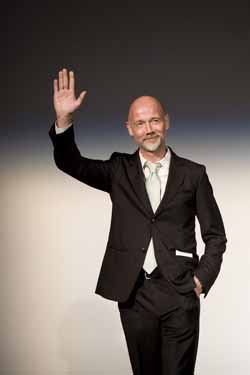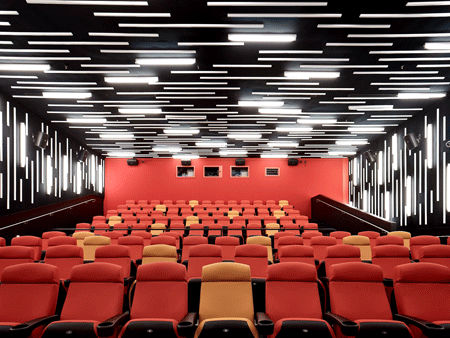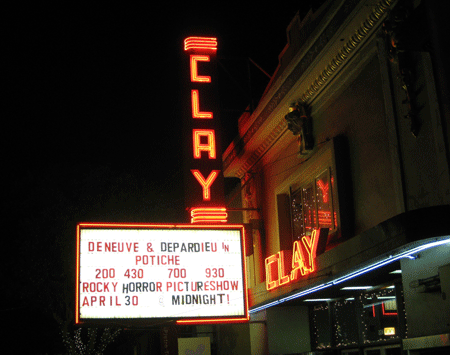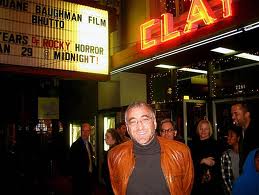FILM | Barbara Kate Repa
JIM TRACY, longtime running coach at the neighborhood’s University High School, never set out to be a film star. But when life conspired to deliver a record-setting team, a diagnosis of Lou Gehrig’s Disease and a community that rallied around it all, he could be no other.
The result is Running for Jim, which screens this month at the San Francisco Independent Documentary Film Festival.
One race in particular provided the dramatic high point of the film. The University High School girls’ cross country team, having recently learned their beloved coach had been diagnosed with the fatal disease, was set to compete in the 2010 state championship, a 3.1-mile race run on a cold damp day in Fresno. Team captain Holland Reynolds gathered the team for the usual rallying cheer: “Go Big Red! Go Devils!” Then they added, more like a prayer, “Let’s do it for Jim.”
The race was a nail-biter from the start. One of the team’s top runners, Jennie Callan, fell at the 100-yard mark and slipped to last place, then rallied to finish 16th in the roster of 169 runners. Other team members also ran their hearts out. Adrian Kerester, who had never run in a state final meet, placed 25th. Lizzie Teerlink beat her personal best time. Bridget Blum led for more than half the race, finishing third.
But Holland Reynolds, the team’s fastest runner, slowed around the 2.5 mile mark, then hit the wall. Three yards from the finish line, dazed and dehydrated, she collapsed and fell to the ground. A race official hovered over her, explaining she either had to complete the race without help or withdraw. An agonizing 20 seconds of film shows Reynolds crawling over the finish line before being swept away to a waiting ambulance.
Her explanation: “Of course I was going to finish. I just knew I needed to do it for Jim because we needed to win state for Jim.”
Filed under: Film, Locals | Leave a Comment »




